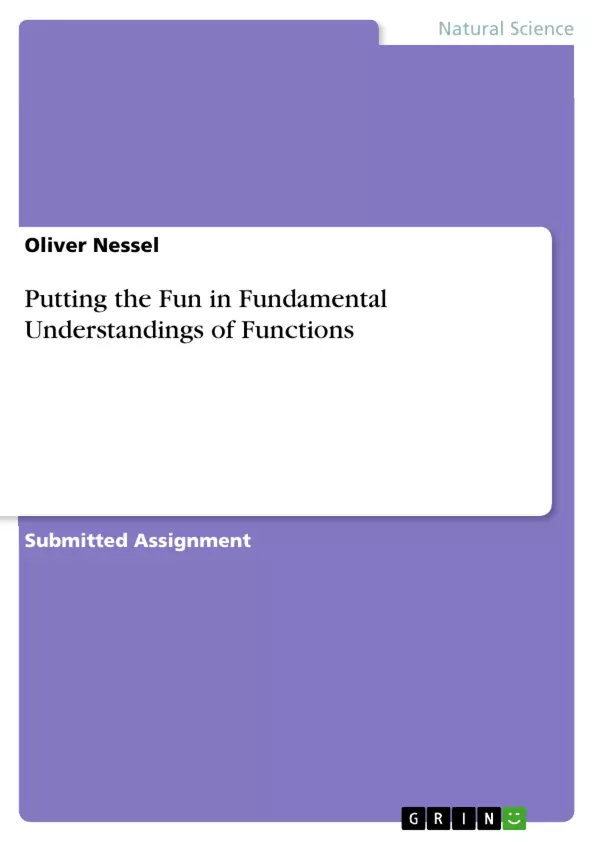This comprehensive text will surely help any grade 8 student in the United States, as it covers topics from simple linear functions to recursive and exponential sequences.
Contents covered:
- Defintions of unit vocabulary;
- Function Notation;
- Interpreting Linear and Exponential Functions Arising in Applications;
- Analyzing Linear and Exponential Functions;
- Building Functions;
- Constructing and Comparing Linear and Exponential models;
- Reflection.
Inhaltsverzeichnis (Table of Contents)
- Defintions of unit vocabulary..
- Function Notation............
- Interpreting Linear and Exponential Functions Arising in Applications.......
- Analyzing Linear and Exponential Functions..
- Building Functions
- Constructing and Comparing Linear and Exponential models ……….….….….….
- Reflection...…………………..
- Bibliography..
Zielsetzung und Themenschwerpunkte (Objectives and Key Themes)
This text aims to introduce fundamental concepts related to sequences and functions, particularly linear and exponential functions, and their applications in various scenarios. The focus is on developing an understanding of these concepts and their practical relevance.
- Defining and differentiating between arithmetic and geometric sequences
- Understanding the concepts of common difference and common ratio in sequences
- Exploring the role of explicit definitions in representing sequences
- Analyzing linear and exponential functions in practical applications
- Developing skills to construct and compare linear and exponential models
Zusammenfassung der Kapitel (Chapter Summaries)
- Defintions of unit vocabulary: This chapter introduces key terms related to sequences, including arithmetic sequences, geometric sequences, common difference, and common ratio. It provides visual representations and examples to illustrate these concepts.
- Function Notation: This section explores function notation, a fundamental tool for representing and analyzing mathematical relationships. It explains how to express functions using symbols and provides examples.
- Interpreting Linear and Exponential Functions Arising in Applications: This chapter delves into real-world scenarios where linear and exponential functions are used to model relationships between variables. It provides examples and explains how to interpret the meaning of these functions in context.
- Analyzing Linear and Exponential Functions: This section focuses on analyzing the properties and characteristics of linear and exponential functions. It examines concepts such as slope, intercept, and growth rate in relation to these functions.
- Building Functions: This chapter explores the process of constructing functions to represent given data or scenarios. It discusses techniques for creating linear and exponential functions based on specific conditions and relationships.
- Constructing and Comparing Linear and Exponential models ……….….….….….: This section demonstrates the process of constructing and comparing linear and exponential models to analyze real-world data. It illustrates how to select the appropriate model for a given scenario and analyze its implications.
Schlüsselwörter (Keywords)
The main keywords and focus topics of this text include arithmetic sequences, geometric sequences, common difference, common ratio, function notation, linear functions, exponential functions, applications of functions, model construction, and data analysis.
- Arbeit zitieren
- Oliver Nessel (Autor:in), 2017, Putting the Fun in Fundamental Understandings of Functions, München, GRIN Verlag, https://www.grin.com/document/358732



